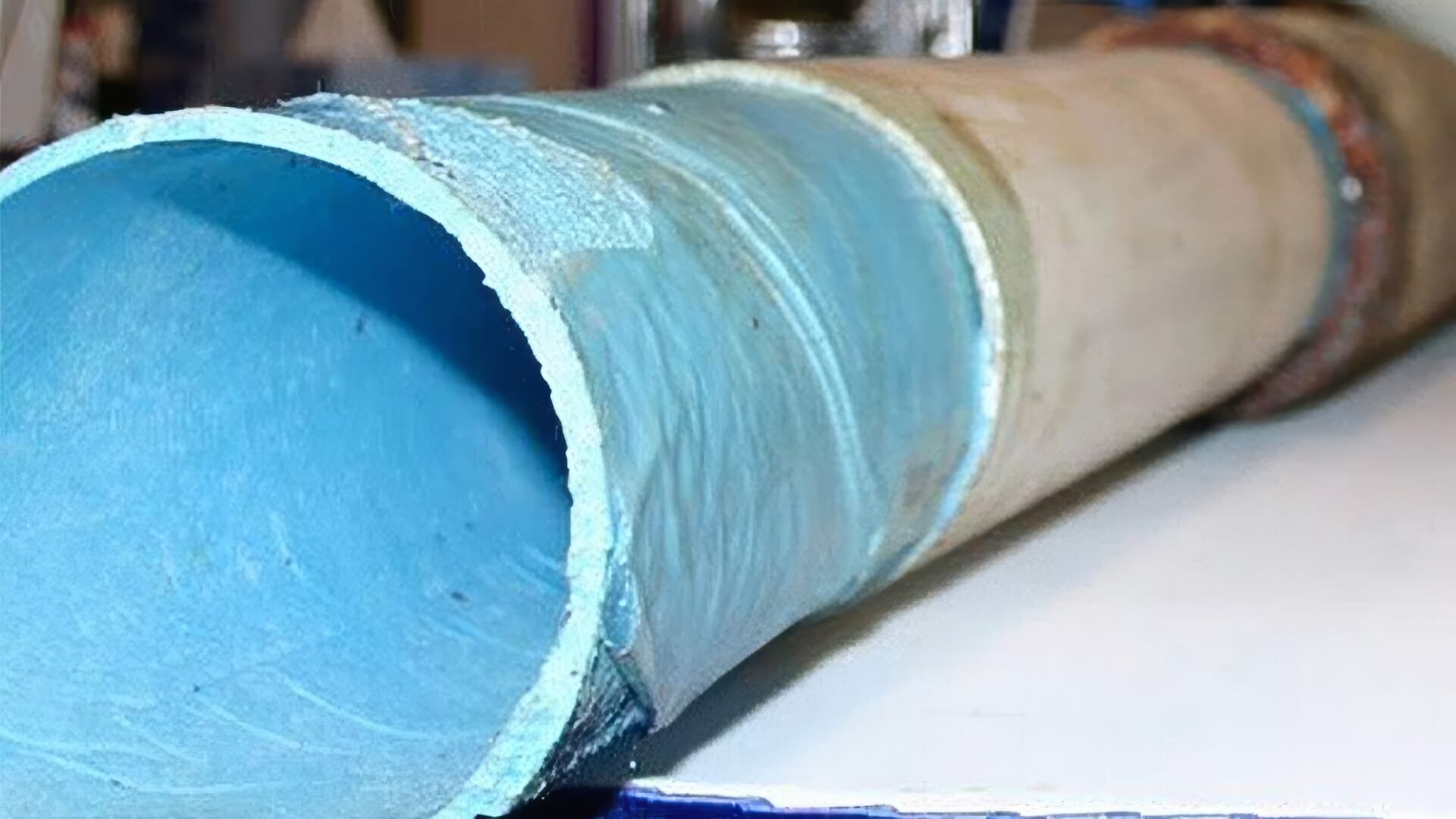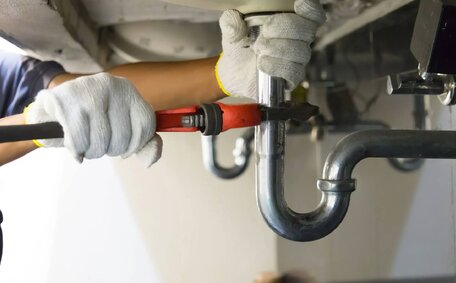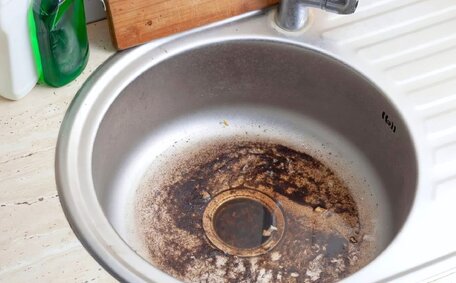Understanding Your Home’s Sewer System
Your home’s sewerage system, including your sewer line, is critical for managing wastewater and sewage. It comprises your drains, pipes, and potentially your septic system, working together to direct waste towards the main sewer drain or onsite wastewater treatment facilities.
Your house drain starts inside your home and runs under your property to connect with the public sewer or your own septic system at the boundary line.
The main sewer line, a vital component of the sewerage network, ferries wastewater from your dwelling and nearby homes to treatment systems or septic systems for processing. Tree roots, grease, and debris can obstruct your sewer, leading to backups without proper maintenance.
Comprehending the function and interconnection of the main sewer drain pipe and each segment, understanding how to clear blockages promptly can prevent minor clogs from becoming major sewer problems.
Recognizing Signs of Sewer Drain Problems
Foul smells may indicate a blockage in your home’s sewage system, preventing waste from being discharged properly.
Gurgling sounds or water backing up in your tub could mean a severe blockage.
A blocked main sewage line may present itself through sinks that are slow to drain, bathtubs that won’t fully empty, or several plumbing fixtures failing at once. Tree roots, grease, soil, and debris can lead to significant blockages within your system. Even slow leaks in cracked pipes may cause water to accumulate in your basement over time, making repairs essential to prevent collapses or ruptures.
Addressing drain clogs promptly, ideally by calling a licensed plumber for inspection, is essential for preventing sewage overflows and subsequent damage. For sewage overflow in bathtubs, toilets overflowing, widespread slow drainage, or strong foul odours, it’s crucial to call a plumber immediately. They can resolve blockage your pipes may have, inspect your system through pipe camera investigations if necessary, and complete any repairs needed.
Clogs and Blockages
Sewer drain clogs often result from substances that don’t dissolve in water, causing backups. Wet wipes, even branded as flushable, and inappropriate disposal of fats oils down your sink can build up over time. Thick toilet paper, hair strands, and soap scum also stick to pipe walls and restrict flow.
Tree roots infiltrating any vulnerable section of a sewer drain line are another common culprit, where they can cause extensive damage. As they proliferate inside pipes, roots choke flow and can leave you with a sewer drain clogged, causing pipe damage or collapse. Poor drainage slope and pipe settling can also produce dips where debris gathers and obstructs passage.
Blockage prevention is crucial to avoid widespread issues in your sewer system and floor drains.
Prevent blockages by not pouring fats, oils, and grease down drains, using the toilet only for human waste and toilet paper, and avoiding harsh chemicals. At the first sign of poorly draining fixtures, peculiar odours, or pooling water, contact your plumber to consider what repair works your main sewer line can handle without delay.
Tree Root Intrusions
It’s important to understand the considerable threat tree roots pose to sewer drainage systems and the necessity of incorporating overflow relief. As roots spread beyond your home in search of moisture, they might infiltrate weak spots in pipes, making the overflow relief gully an essential defence mechanism. When inside a sewer pipe, roots can quickly expand, which a properly designed relief gully org(anisation) helps prevent, thus mitigating the obstruction of wastewater flow.
Signs of tree root invasion in your sewer include slow or stopped drainage, foul sewage odours, and water backing up into your home, compromising your water quality. Concurrently malfunctioning fixtures also hint at a potential sewer line blocked by intrusive roots, which can jeopardize your drinking water supply.
Finding the root cause might require a plumber to conduct smoke testing to thoroughly inspect your pipes, using specialised camera equipment. Plumbers can then recommend optimal solutions, like root cutting or pipe relining, or even replacement if the damages are critical.
Given that roots can penetrate drainage systems, you’ll need an overflow relief gully as a top measure for preventing sewer backups. Otherwise, make sure to have your pipes inspected every 12-24 months and address any intruding roots before they escalate into a sewer blockage or pipe collapse.
Damaged Sewer Pipes
Sewer pipes face ongoing damage risks that can seriously compromise function. Pipe walls over time can degrade from corrosion caused by sewer gases or soil chemicals, also affecting septic tanks. Old clay or iron pipes are especially susceptible, which can lead to frequent repairs or replacement needs. Ground shifts not only stress pipe joints but also cause cracks and leaks to form.
Once cracks appear, roots and debris can invade, blocking wastewater from flowing through your home’s piping system. Sediment and grease build-up accelerates corrosion and pipe failure. The gradual damage means problems emerge slowly until pipes suddenly collapse or a major drain clogged requires emergency repairs as soon possible.
For pipes older than 50 years, engage a local plumber to conduct a detailed sewer inspection using camera technology. They can identify damage locations, advise rehabilitation options like pipe relining, or recommend full replacement if risks are severe. Scheduling inspections every 5 years with your local council or plumbers enables timely repairs and helps avoid catastrophic pipe failures.
Don’t wait for total failure.
Damaged sewer pipes beyond salvage require excavating and replacing entire sections. Such failure poses a threat of contaminating soil and aquatic environments with untreated waste, thus alerting both the health department and your local water authority because of the substantial public health and ecological danger. Act preventively with regular pipe assessments and timely repairs at first signs of deterioration.
Preventative Maintenance
Being proactive about sewer system maintenance can significantly extend its lifespan and prevent issues down the line. There are several key preventative measures homeowners can follow:
Routine Desludging: To avoid issues, arrange for a professional to pump out your septic tank or clean the grease trap every 2-5 years. Letting solids and grease accumulate risks clogging pipes or septic system failure.
Avoid Harmful Substances: Avoid pouring ingredients like fats, oils, or chemicals down drains, and clean fixtures with mild soap water instead. employ sink strainers to trap foreign items and dispose of food waste in the bin. Only human waste and toilet paper should enter your sewer system.
Inspect Annually: In droughty conditions, examine your drain field or leach drains for odd smells, damp patches, or shifts in flora, which could betray a leak and warrant a call to a professional. Inside, regularly running water through all drains monthly to keep water seals intact is essential, so do I schedule these checks? Absolutely.
Protect Pipes: Avoid driving heavy vehicles over pipes and drainage lines to protect your sewerage system. Regularly prune the roots of trees near drains to prevent blockage. Install grated drain covers and consider a sump pump to prevent debris entering.
Staying vigilant protects human health and household wellbeing by preventing sewage backups. It also reduces service calls, costly emergency repairs and full pipe replacements that run into the thousands. Safeguard your financial well-being and mental tranquillity with routine sewer preservation biannually; read more about how much tailored maintenance plans can save you.
DIY Temporary Fixes for Minor Issues
For minor drainage issues before professional help arrives, there are some simple fixes you can try:
- How Unblock: Use a heavy-duty plunger over the drain for several minutes, covering the overflow hole during plunges. This can dislodge obstructions.
- Chemical Drain Cleaners: These can help break up organic matter like hair or grease. Carefully follow label directions - never mix chemicals. After using, ensure to rinse thoroughly with water.
- Boiling Water: Pour a kettle of boiling water directly into the drain to melt fat buildups. Avoid scalding and repeat if needed.
While these remedies may provide temporary relief for minor slow drains or odours, they have limitations. During wet weather, be careful not to over-plunge to prevent drain damage. Incorrect use of chemical drain cleaners can result in harmful and corrosive fumes.
As a property owner, if you experience a sewage backup, flooding, or drainage issues affecting multiple fixtures, stop attempts to self-remedy and call a professional plumber immediately. Learn more about health safety measures to mitigate risks stemming from exposure to raw sewage - it can contain toxic gases and bacteria.
For severe obstructions only a professional has the specialised equipment and expertise to fully clear drains, diagnose underlying issues, and execute repairs or replacements if pipes are damaged. DIY efforts also risk invalidating your insurance coverage on drain issues if problems worsen.
Calling a Professional Plumber
Calling in professional plumbers should be your initial move to deal sewage complications such as persistent blockages or backups, pipe damage from tree roots or corrosion, widespread drainage problems, or foul odours signalling collapsed pipes.
Our licenced plumbers have the expertise to accurately identify causes through pipe camera investigations and can answer your query about how much does it cost to rectify all types of sewer problems. We can hydro jet pipes to scrub away years of accumulated grease and debris, cut invasive tree roots, repair broken sections, or fully replace piping beyond salvage.
Kareela Plumbing also offers the best way to engage in preventative sewer maintenance to maximise your system’s longevity. Get ahead of issues through regular camera inspections, desludging and pipe clearing. We’ll assess risks, advise on repiping options if deterioration is spotted, and proactively maintain your system.
Don’t wait for total failure resulting in backed-up sewage flooding your home. Contact Kareela Plumbing on 1300 349 338 or jobs@kareelaplumbingservices.com.au to schedule maintenance checks or urgent repairs whenever sewer problems arise.
Let our 24/7 emergency plumbers rapidly solve drain blockages and sewerage issues. We service residential and commercial clients across Sydney using state-of-the-art technology for guaranteed results without the hassles of DIY.
Sewer Line Repairs and Replacement
Sewer lines face ongoing damage from ageing pipes, which is a major concern in wastewater management, along with ground movement, tree roots, and waste erosion. Eventually, repairs or a comprehensive overhaul of your drainage become imperative.
For spot pipe issues like cracks or root intrusions, you might wonder how much does trenchless relining cost to fix sections without major digging. Epoxy resin coats damaged inside walls, essentially creating new pipes via remote-controlled robots.
But if pipes collapse or corrode beyond salvage, professionals must excavate to install new piping. Factors like pipe length and access influence traditional open trenching versus pipe bursting methods.
An expert plumber performs a camera pipe investigation first to gauge damage and advise the optimal repair approach. They determine if total line replacement is warranted or isolated repairs suffice.
Catching sewer issues early maximises rehabilitation options without the huge costs and disruption of emergency sewer line failure. Stay proactive through regular camera checks and maintenance. Should signs of decay surface, Respond swiftly; consider what do when the opportunity for cost-effective relining exists only while the sewer line can still support such a procedure before extensive excavation is mandated.
For professional drain assessments, pipe repairs and guaranteed sewer line replacement without the hassles of DIY, contact Kareela Plumbing on 1300 349 338 or jobs@kareelaplumbingservices.com.au.
Health and Safety Best Practices
When dealing with sewer issues, it’s crucial to follow health and safety best practises to avoid illness. Untreated sewage harbours an array of pathogens and toxic fumes, constituting a major health hazard capable of leading to acute infections and diseases upon exposure or inhalation.
If you experience a sewer backup or overflow, take precautions:
- Evacuate the affected area and ventilate the space by opening doors and windows
- Always wear protective gear like waterproof boots, rubber gloves, eye protection, and face masks when cleaning up
- Use disinfectant to sanitise surfaces touched by sewage
- Ensure you wash your hands thoroughly with antibacterial soap after handling contaminated items
- Wash clothes worn during cleanup separately with hot water and bleach
- Seek medical care if you or family members become ill following exposure
For extensive clean up or persistent sewage flooding, allow professional hazardous materials crews to handle safely. Sewage can permeate drywall, flooring and furnishings over time, requiring removal to fully remediate health risks.
Preventatively install sewer backflow valves to contain overflows. Have old pipes inspected regularly and address intruding tree roots early before they cause breaks. Upgrading ageing sewer lines also protects family health by avoiding contamination incidents.
Don’t take risks with sewer germs - follow safety procedures strictly to keep your family healthy. Contact Kareela Plumbing on 1300 349 338 for professional assistance stopping overflows or flood restoration services after incidents occur.






